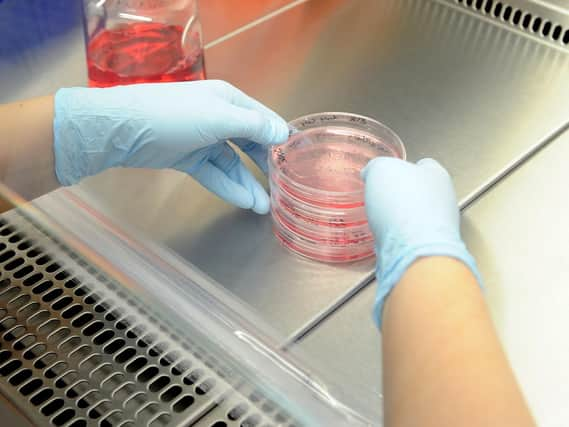Scottish scientists make breakthrough in search for MND cure


There is currently no known cure for the degenerative condition, which causes signals from motor neurone nerve cells in the brain and spinal cord needed to control movement to gradually stop reaching the muscles.
Researchers used stem cell technology to identify a type of cell that can cause motor neurones to fail.
Advertisement
Hide AdAdvertisement
Hide AdUsing stem cells from patient skin samples, they found glial cells, which normally support neurones in the brain and spinal cord, become damaging to motor neurones in the patients with the condition.
By testing different combinations of glial cells and motor neurones grown together in the lab, researchers found glial cells from MND patients can cause motor neurones in healthy people to stop producing the electrical signals needed to control muscles.
Professor Gareth Miles, of the University of St Andrews, who helped lead the joint project with the University of Edinburgh, said: "We are very excited by these new findings, which clearly point the finger at glial cells as key players in this devastating disease.
"Interestingly, the negative influence of glial cells seems to prevent motor neurones from fulfilling their normal roles, even before the motor neurones show signs of dying."We hope that this new information highlights targets for the development of much-needed treatments and ultimately a cure for MND."
The joint research, funded by the Motor Neurone Disease Association, MND Scotland and the Medical Research Council and Dementia Research Institute, Edinburgh, was published in the scientific journal Glia.
